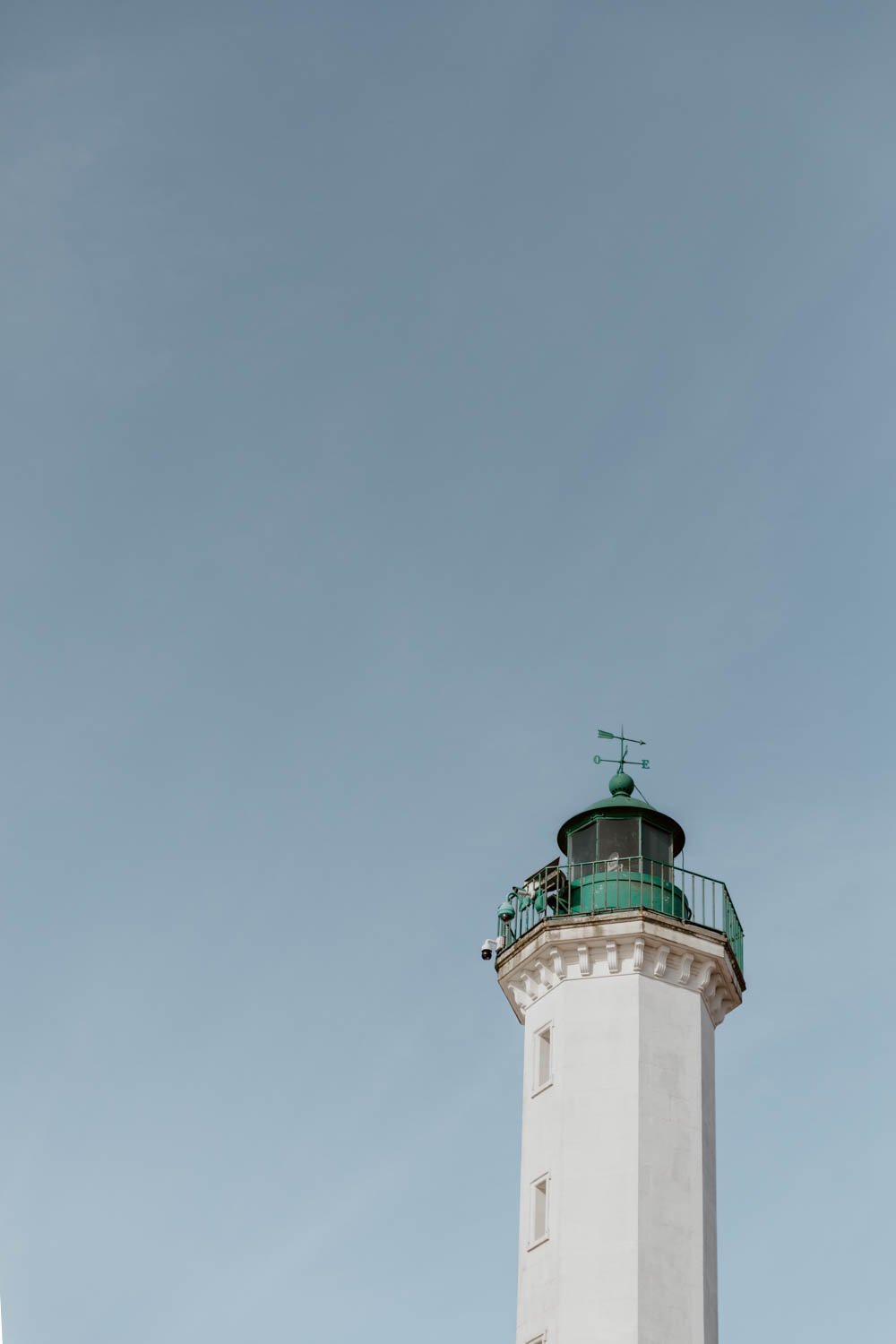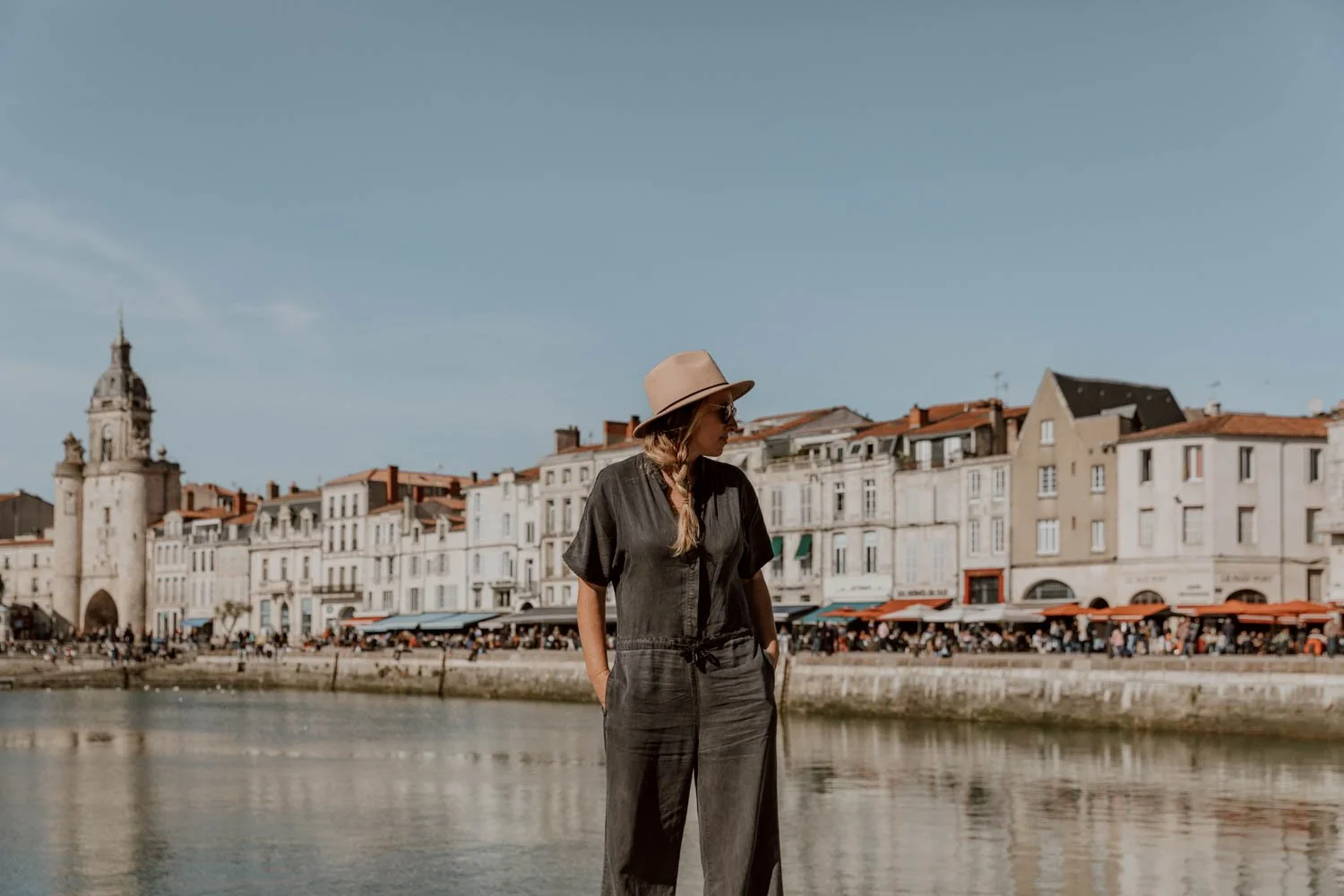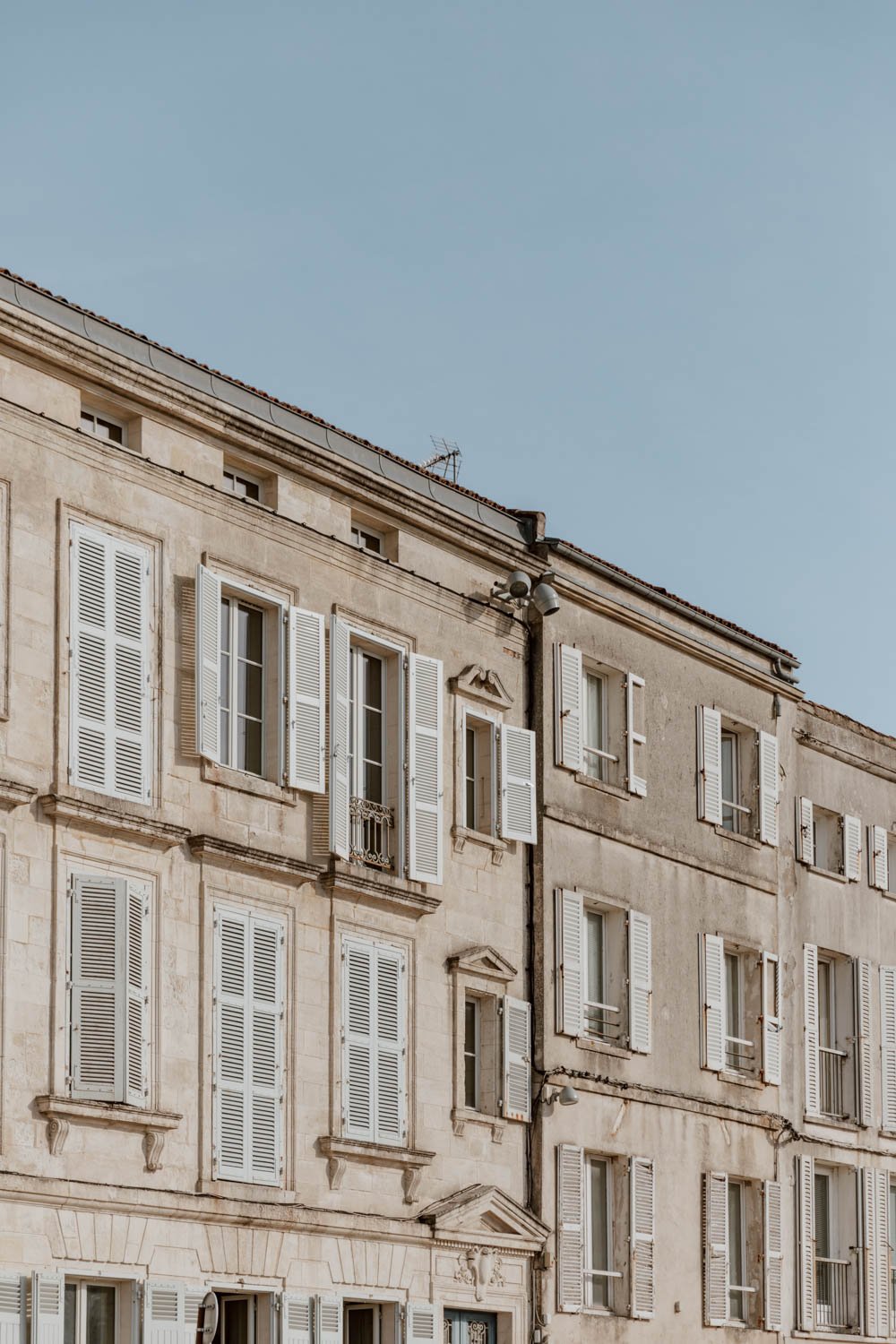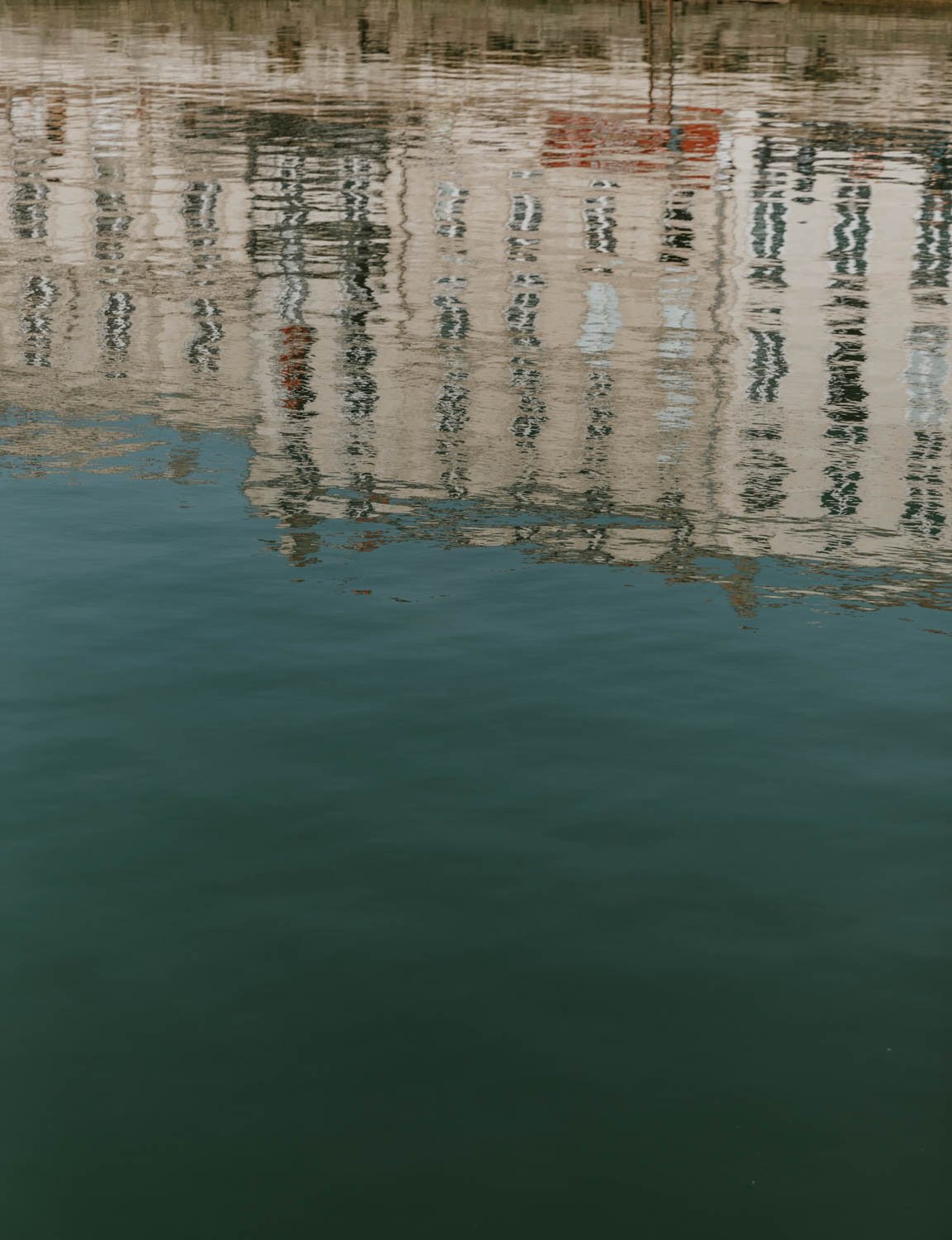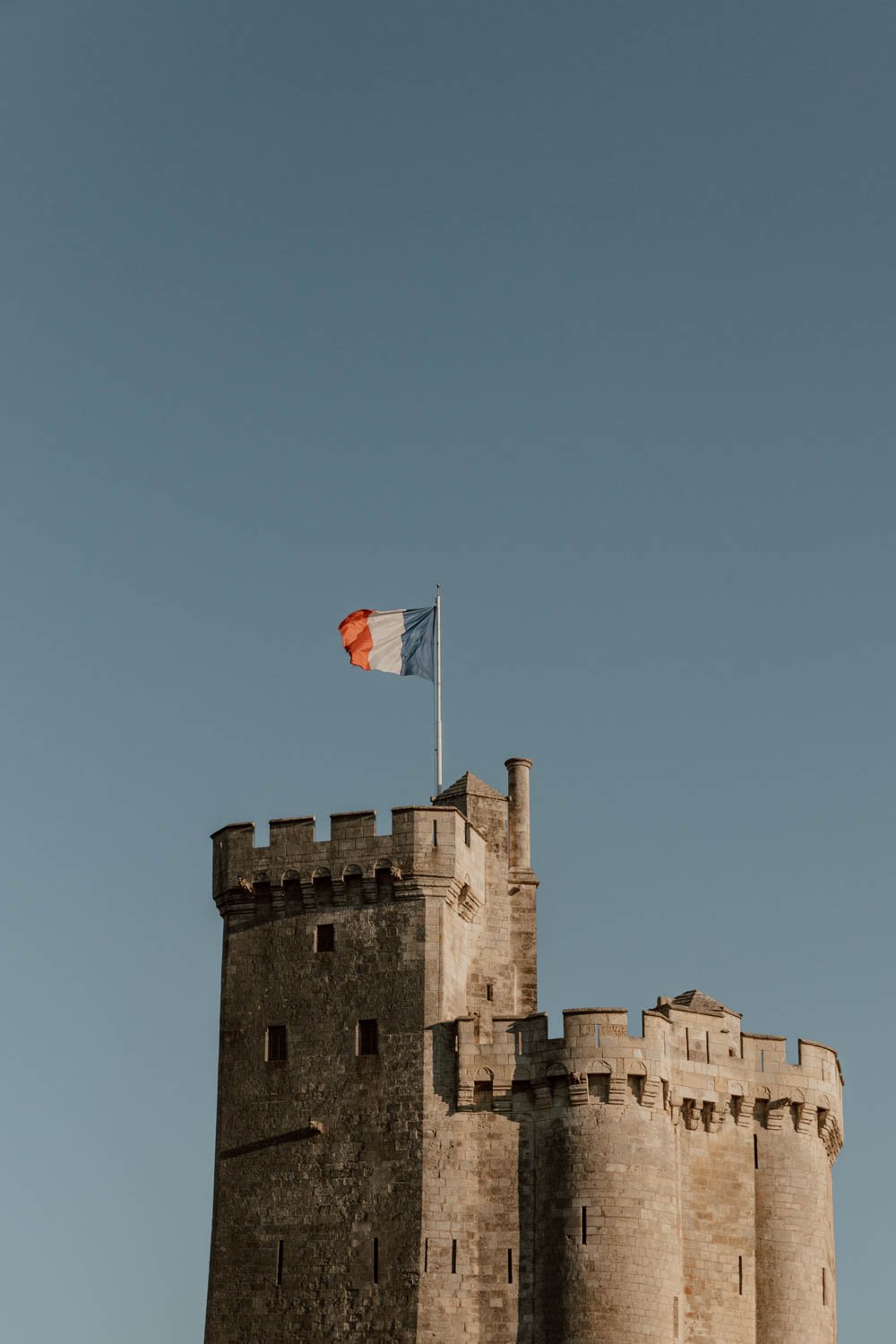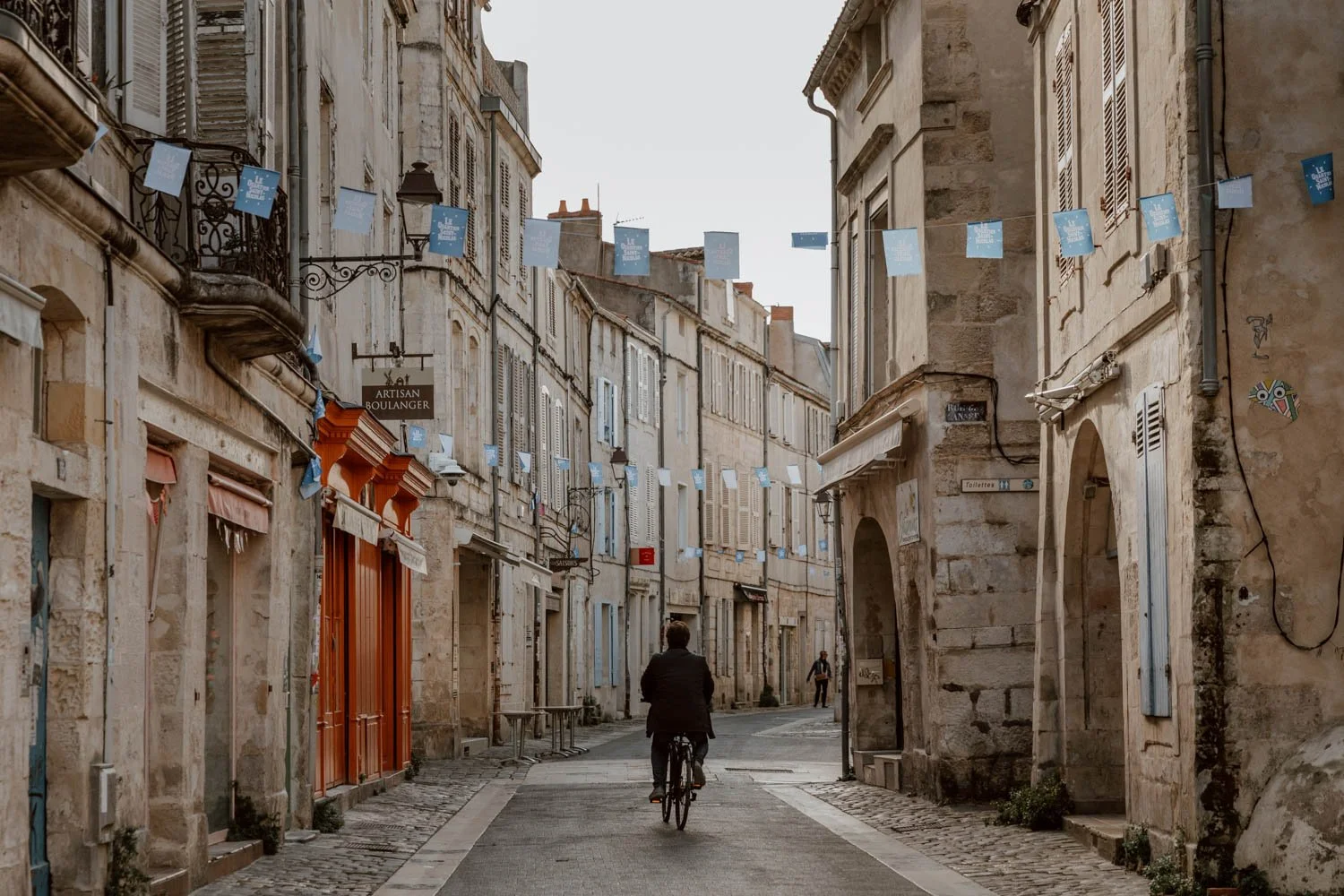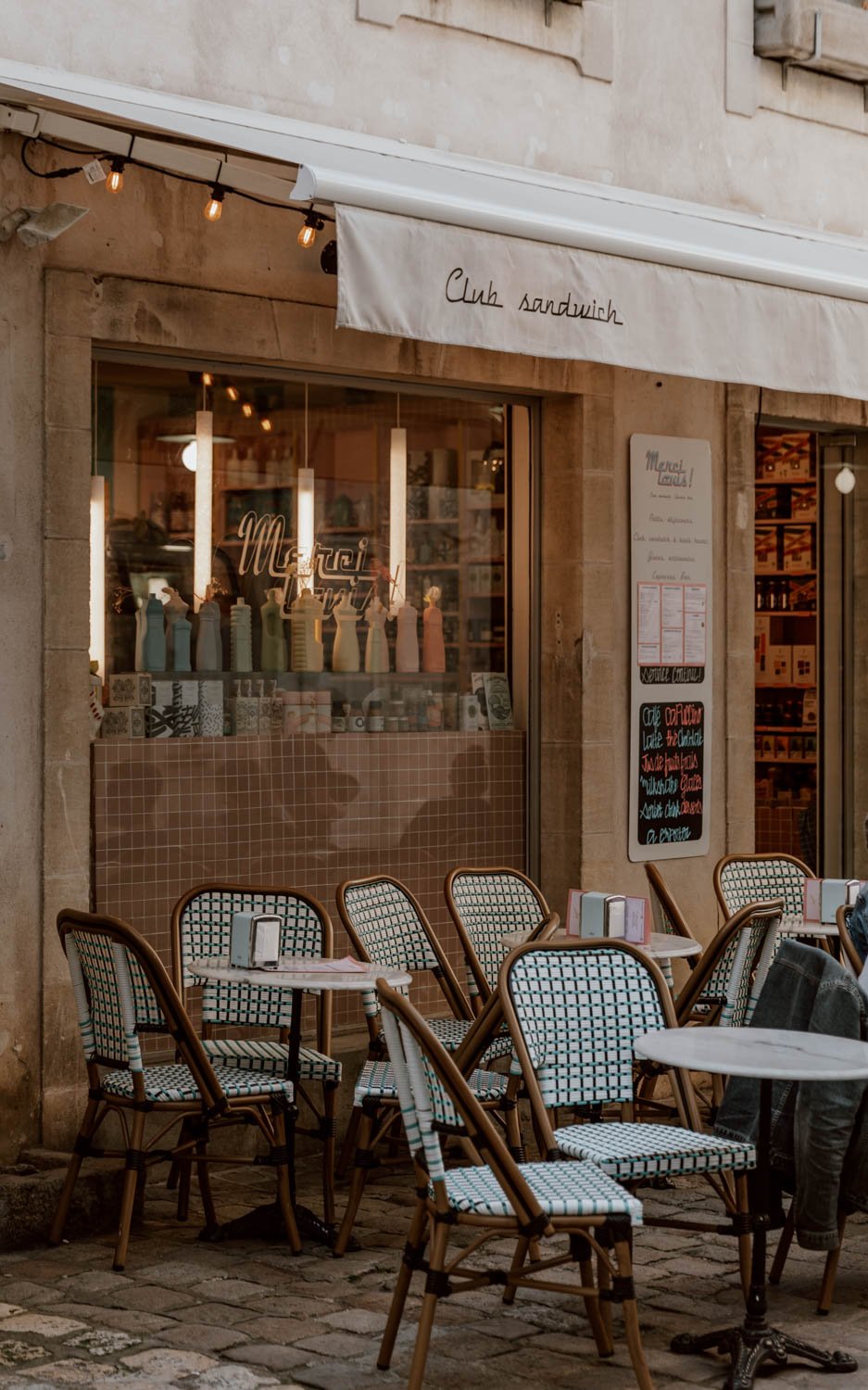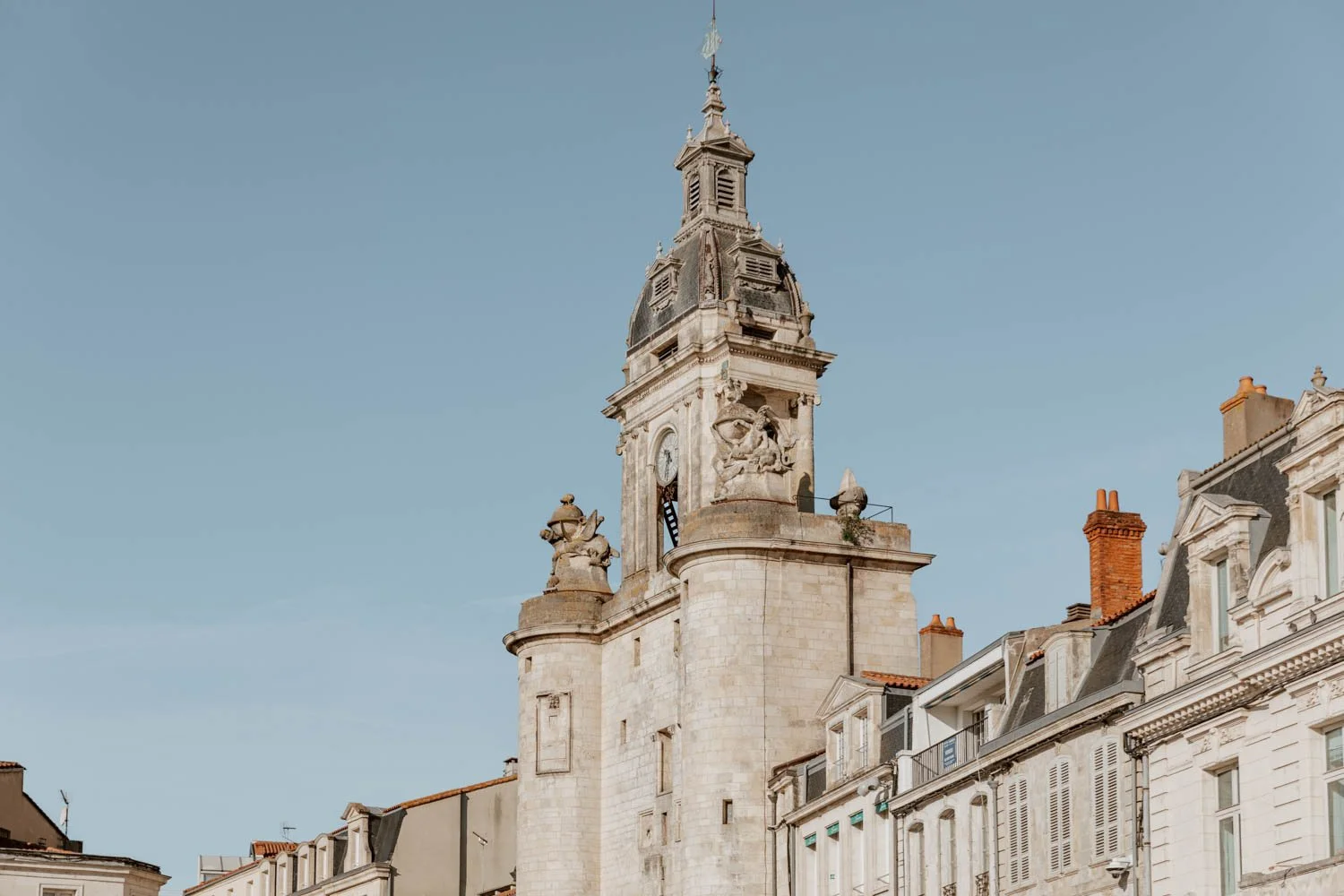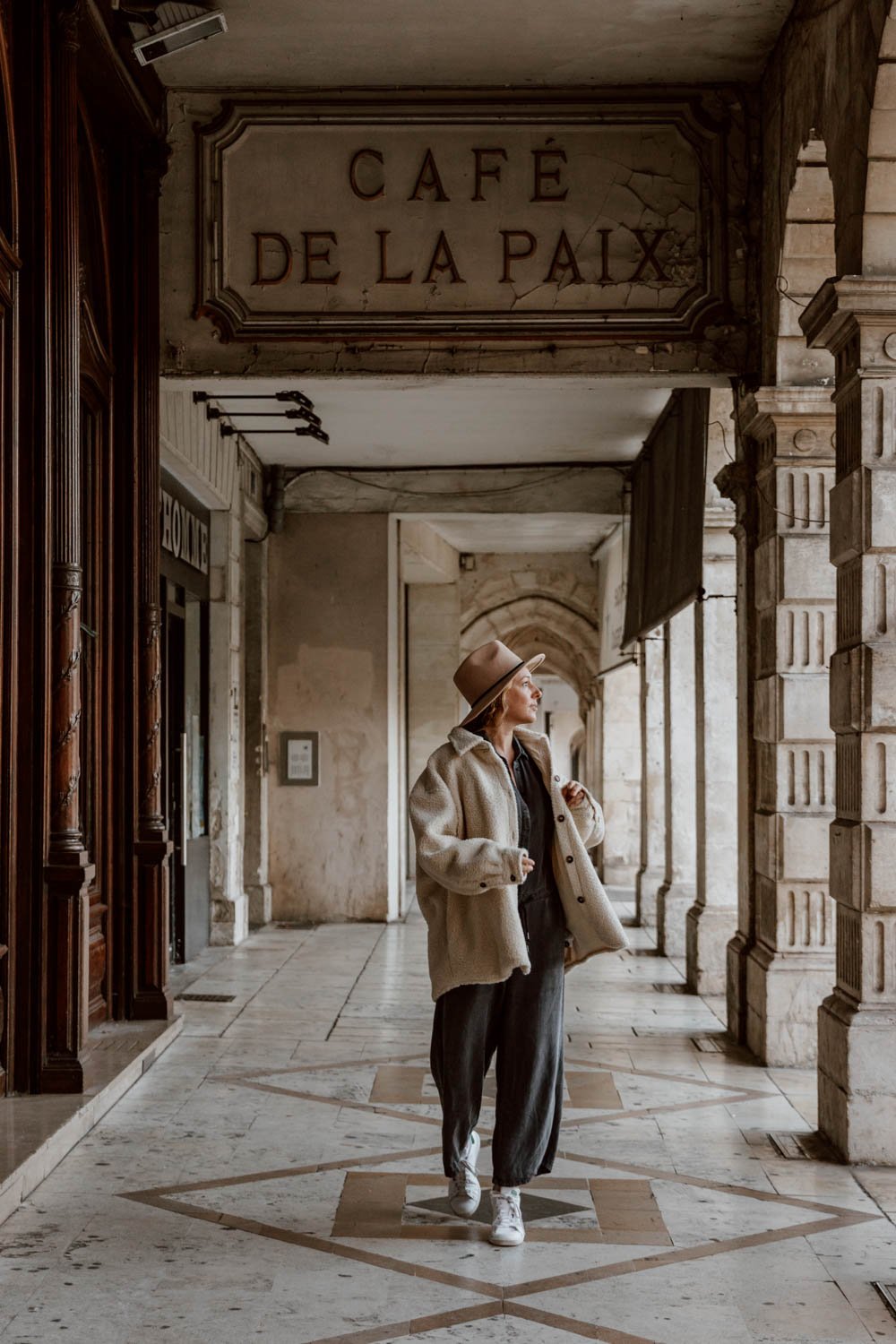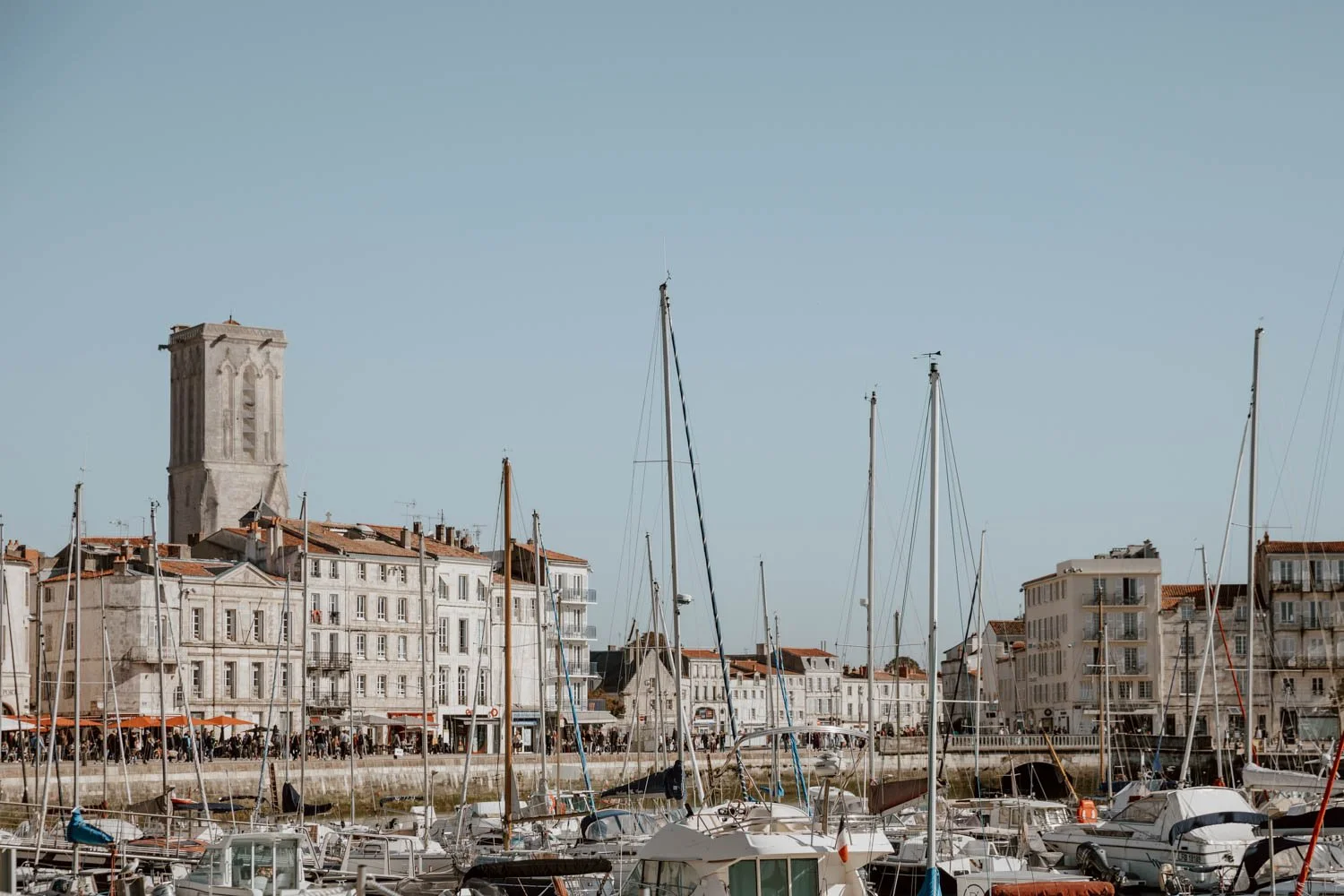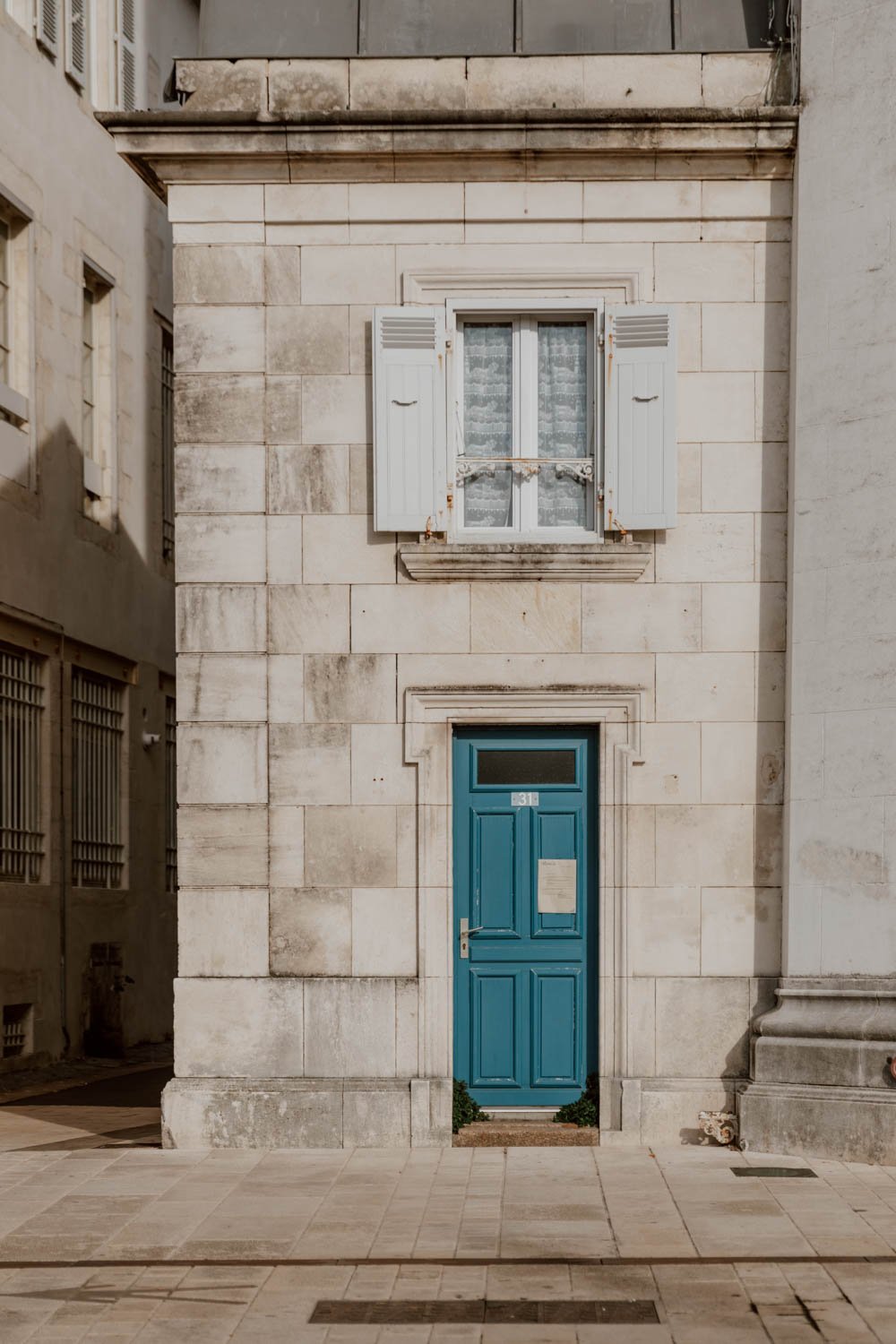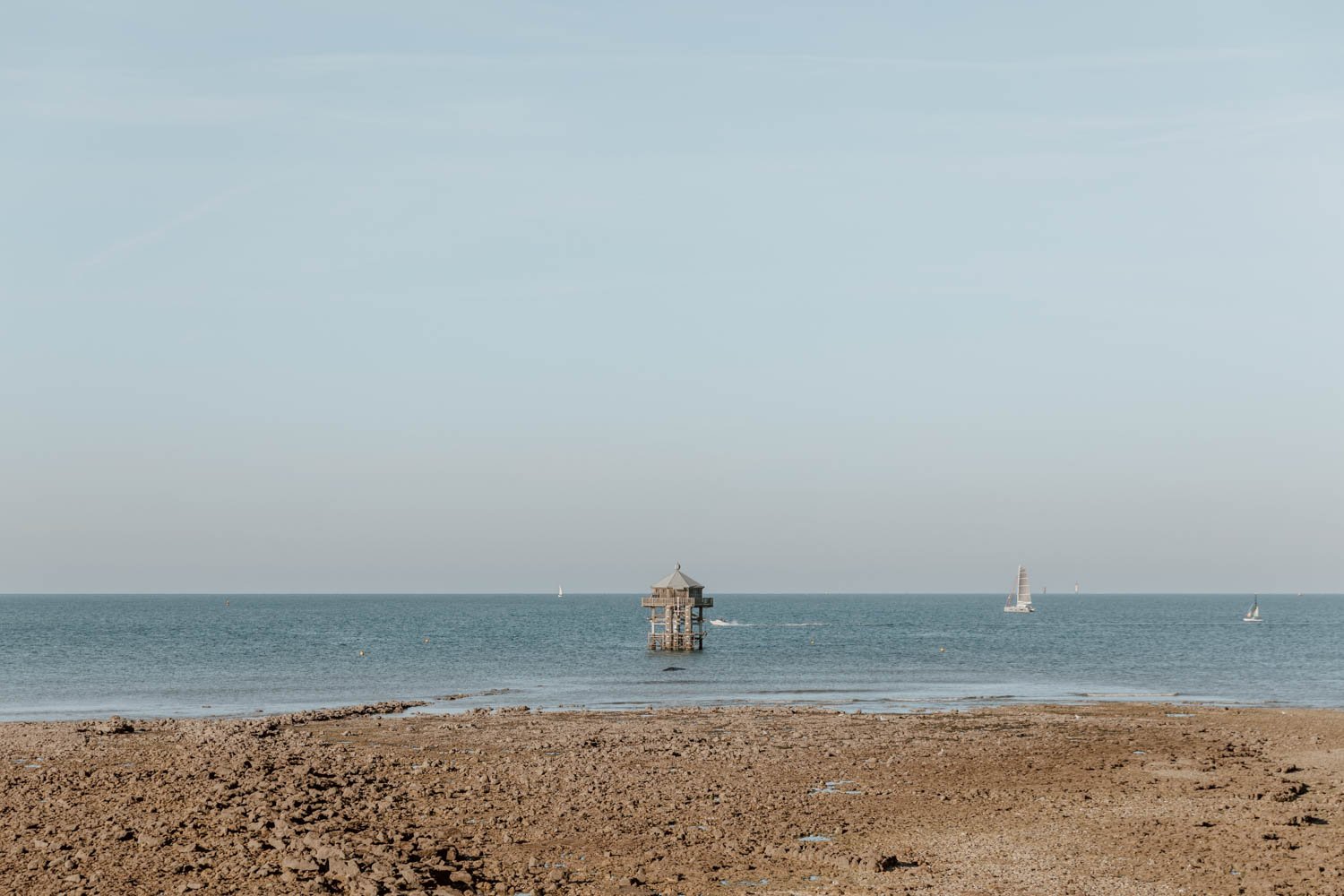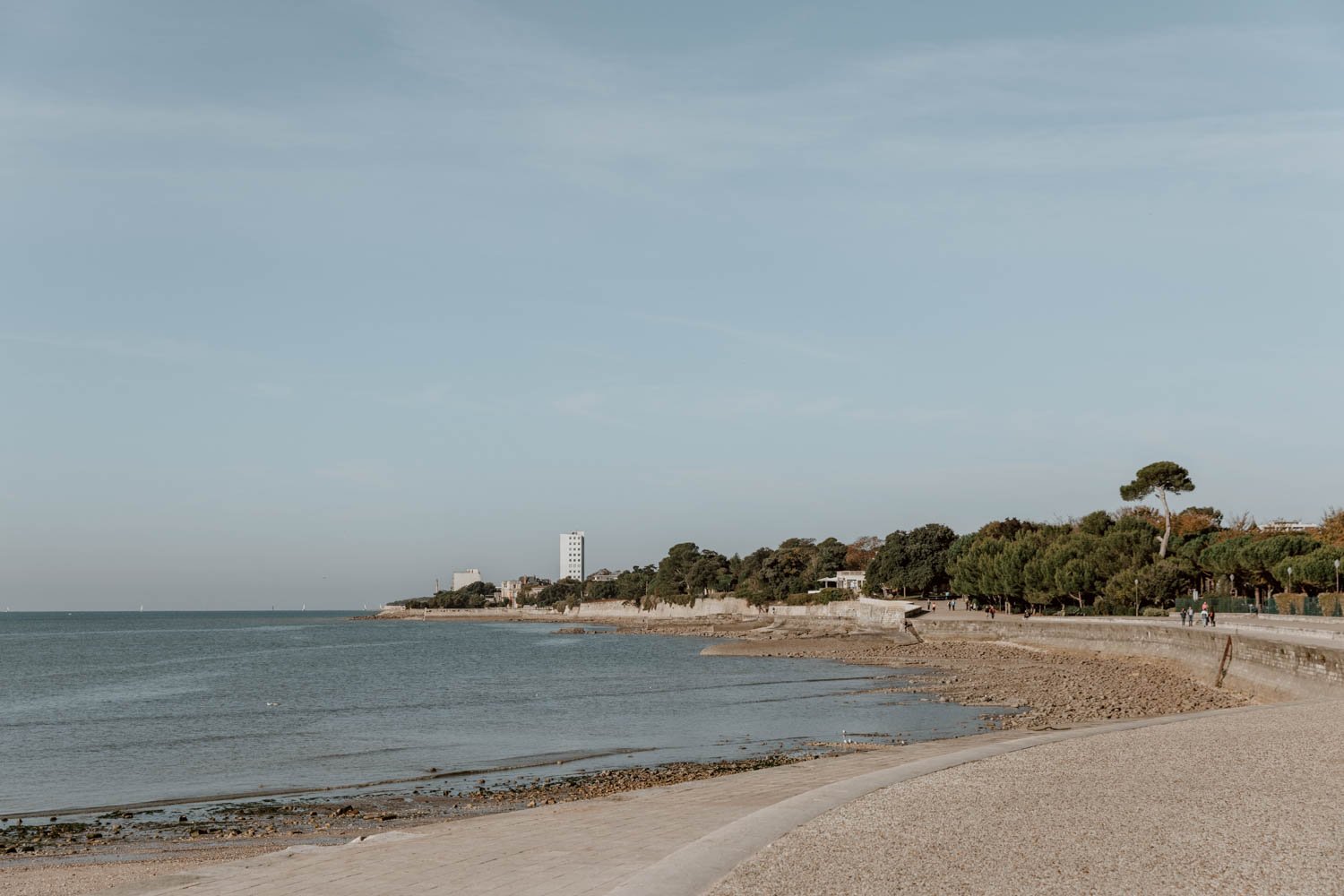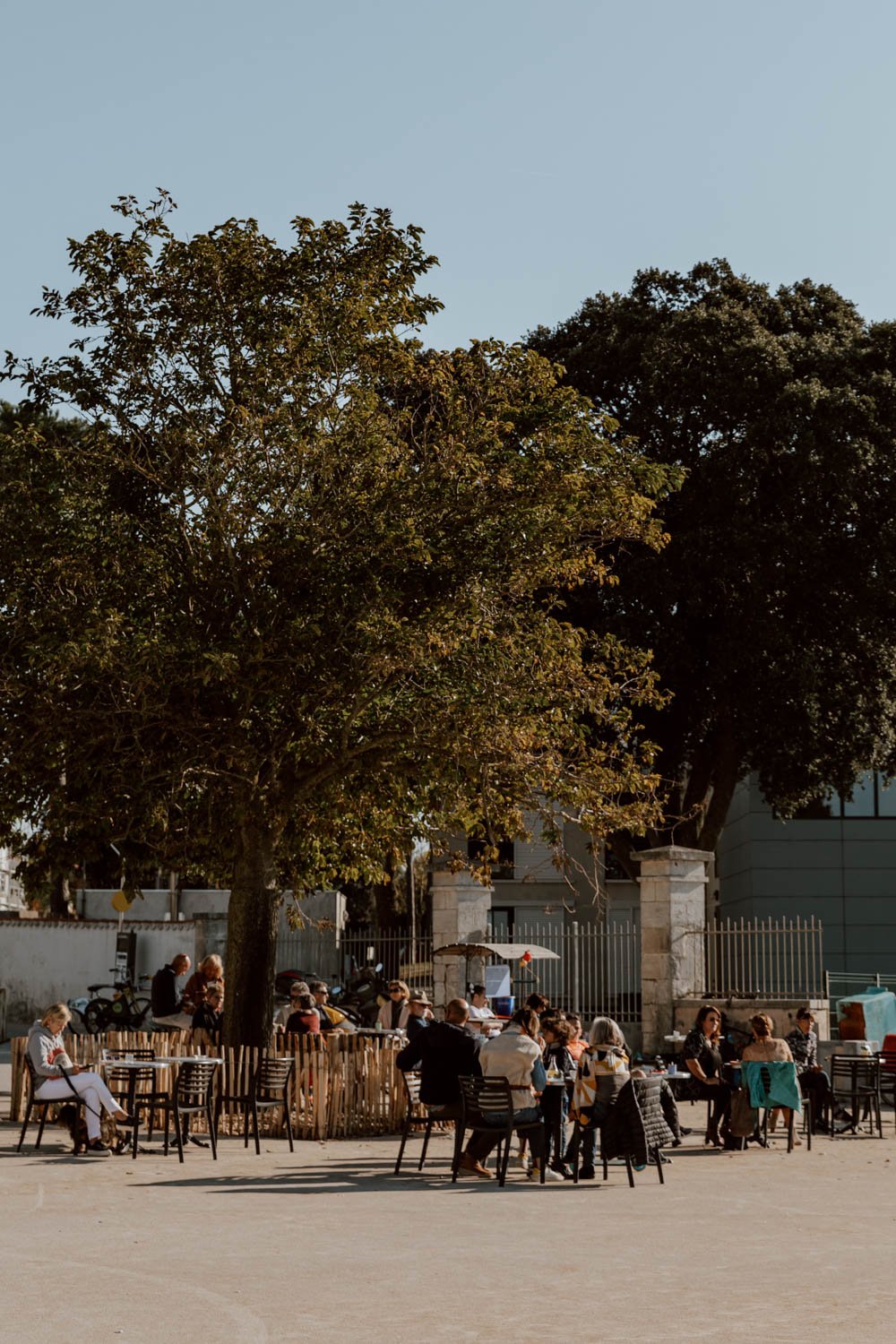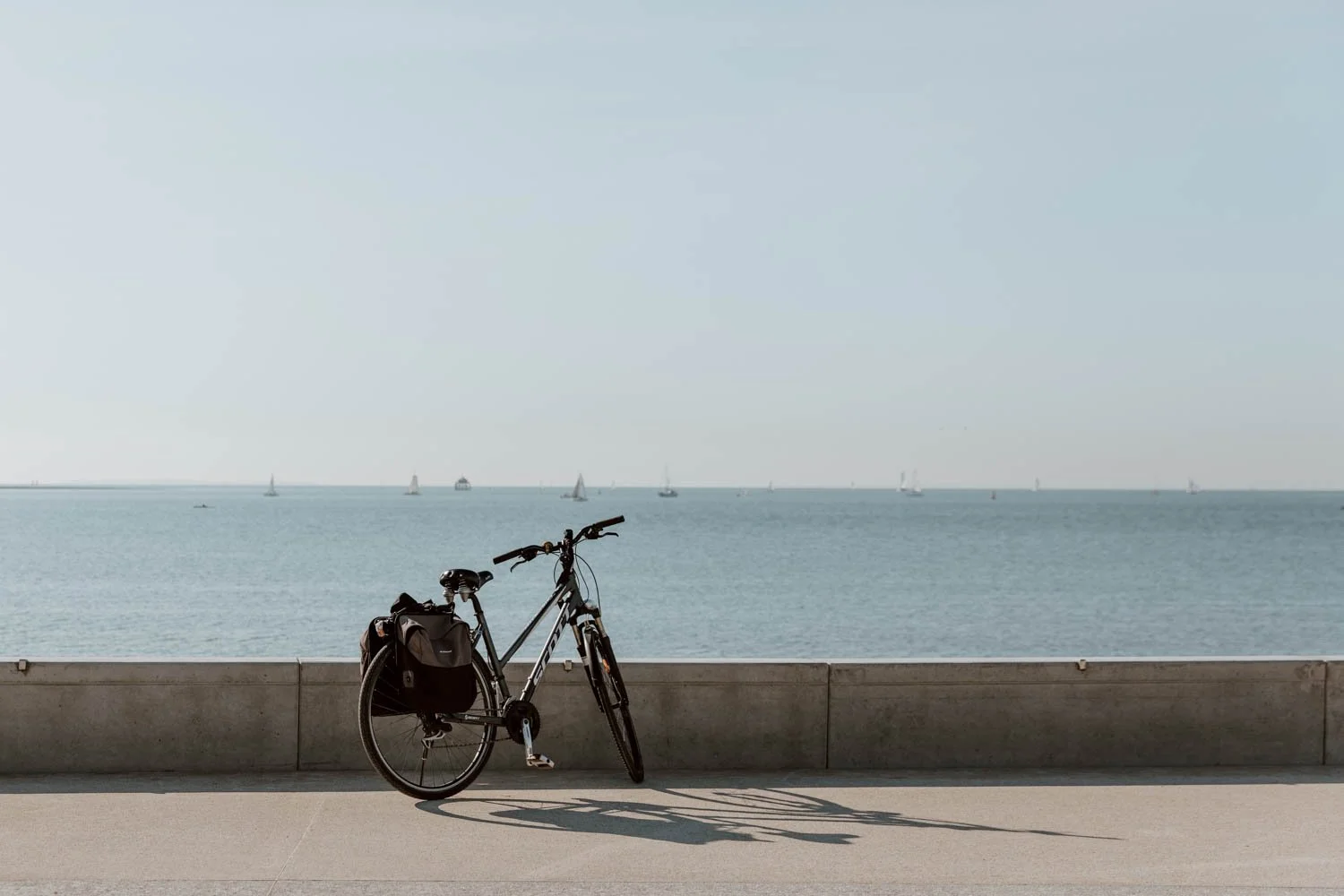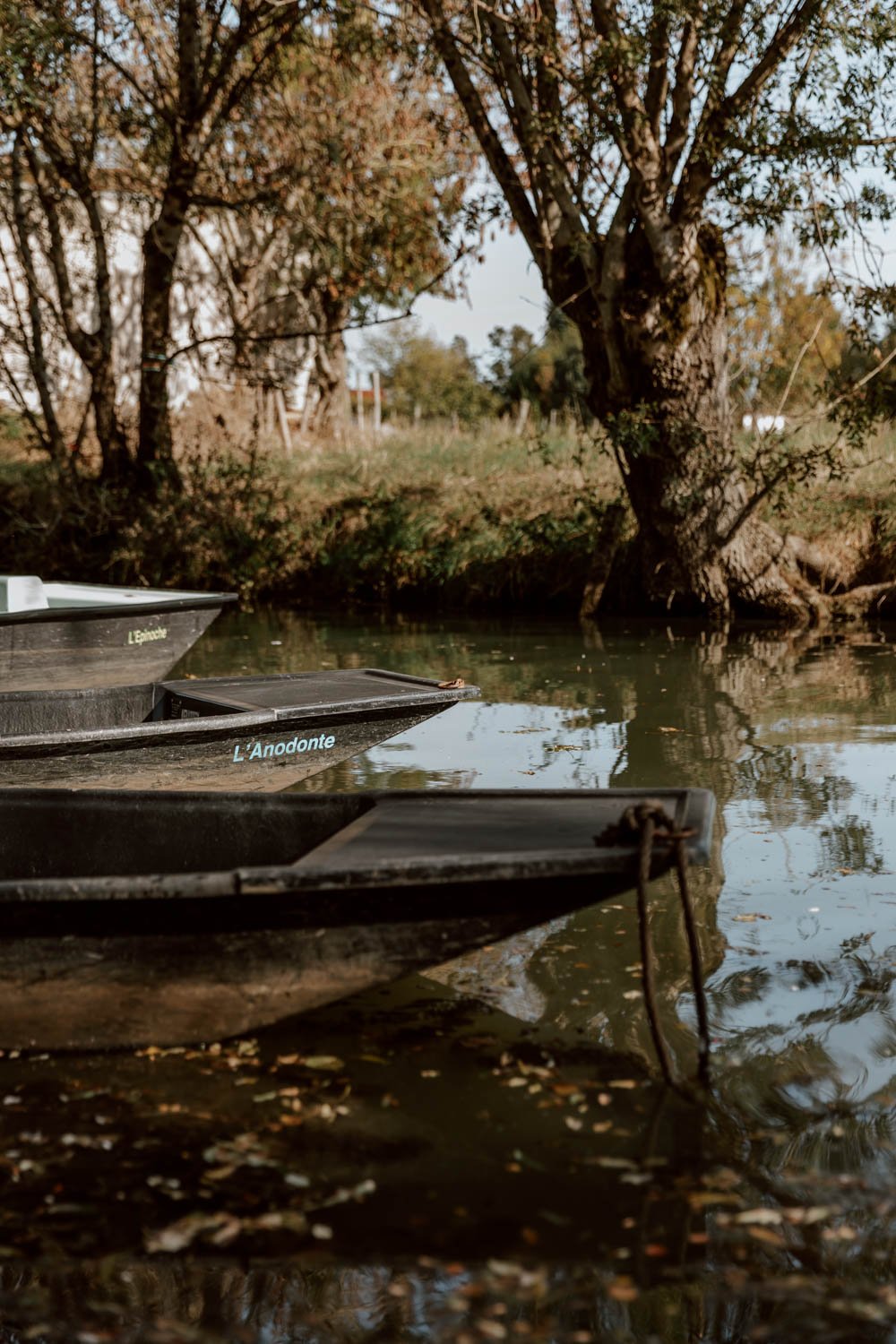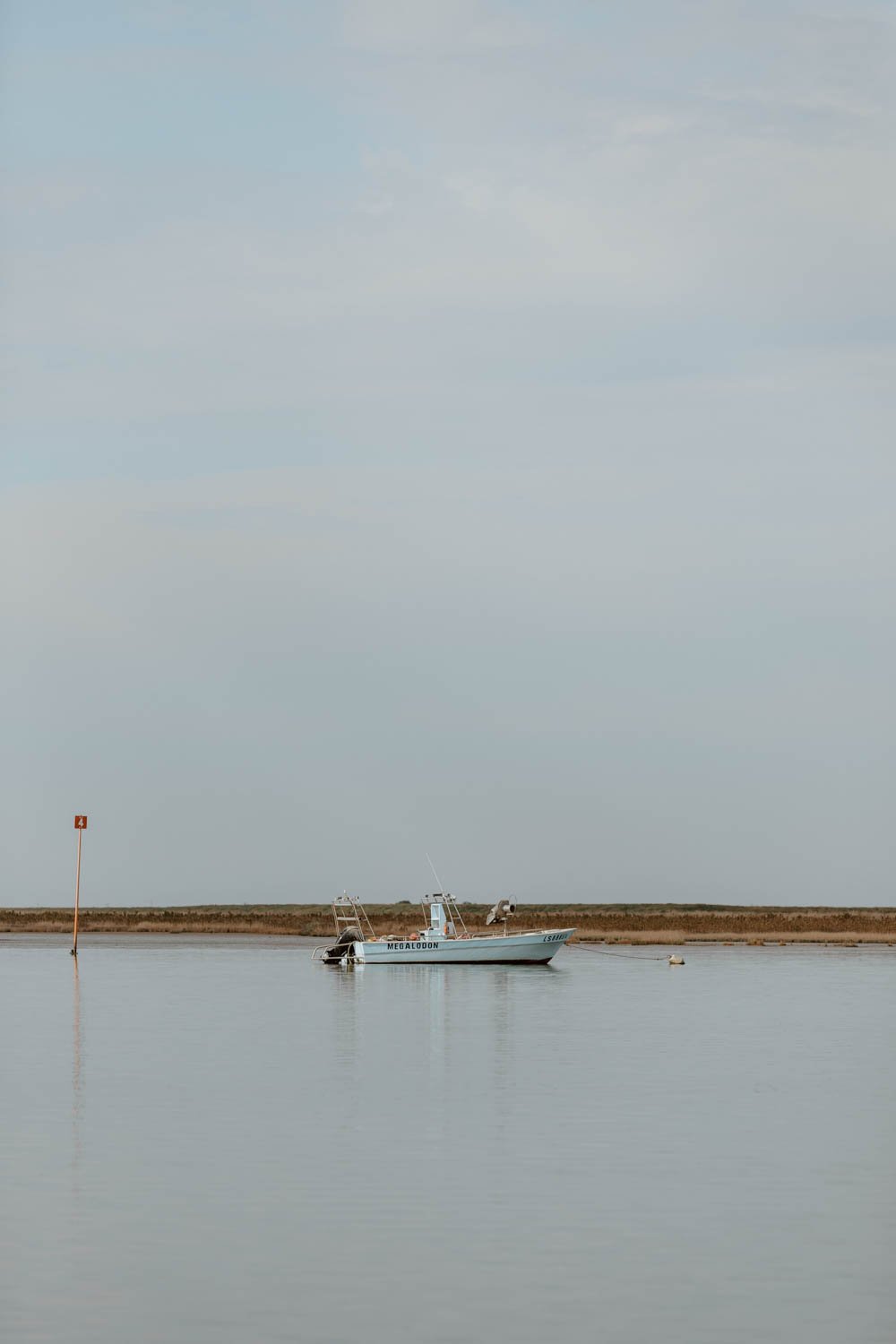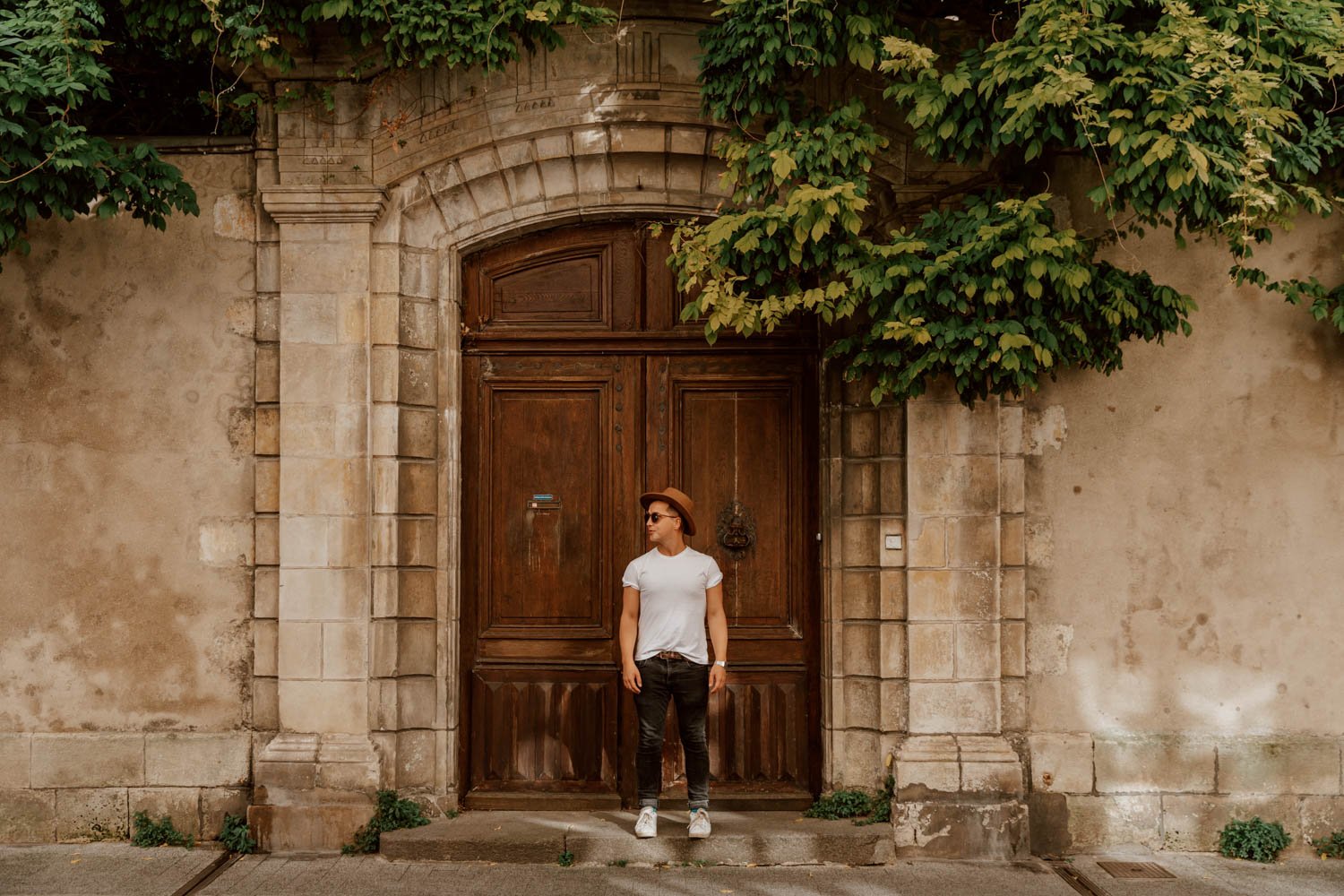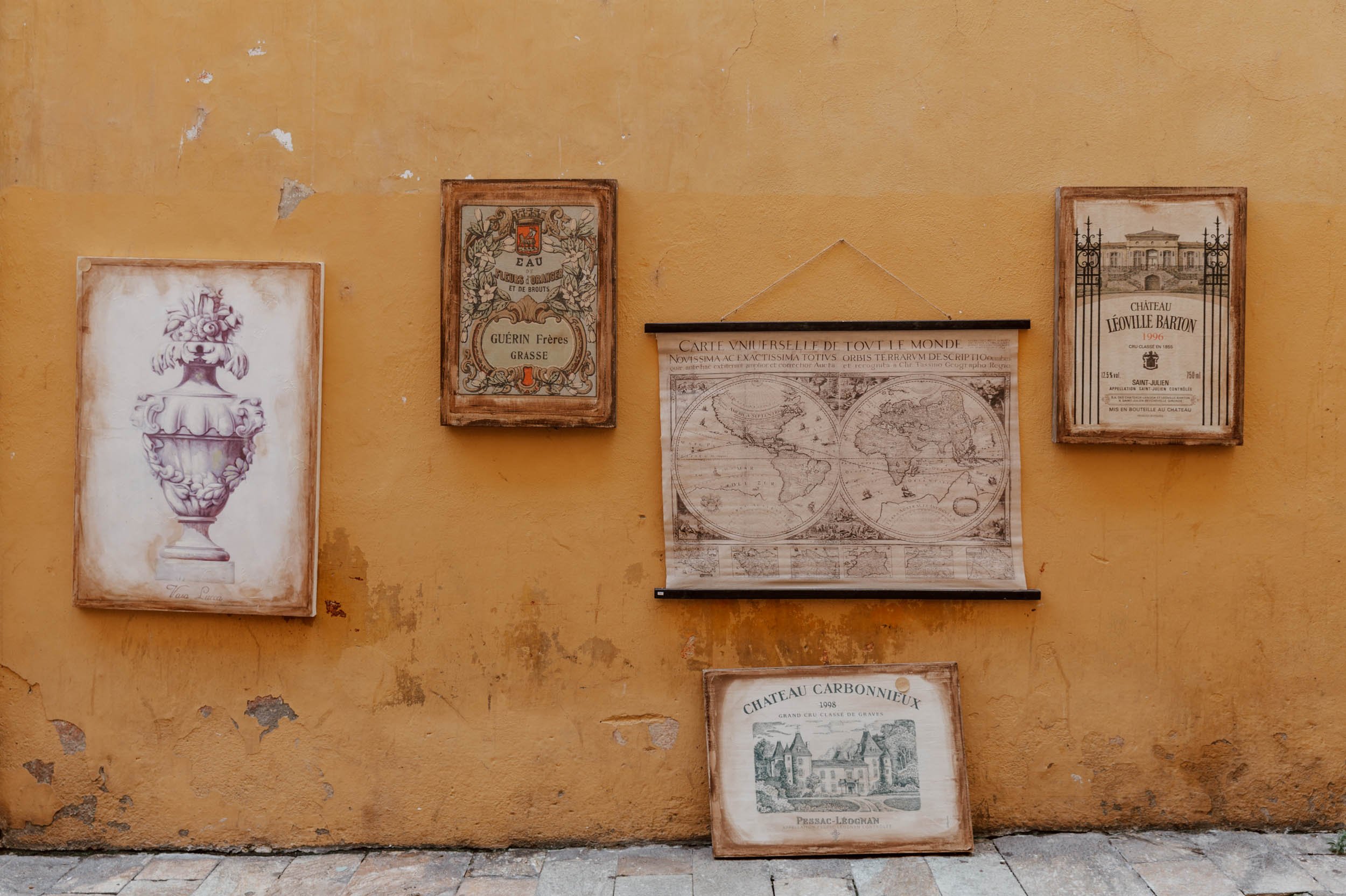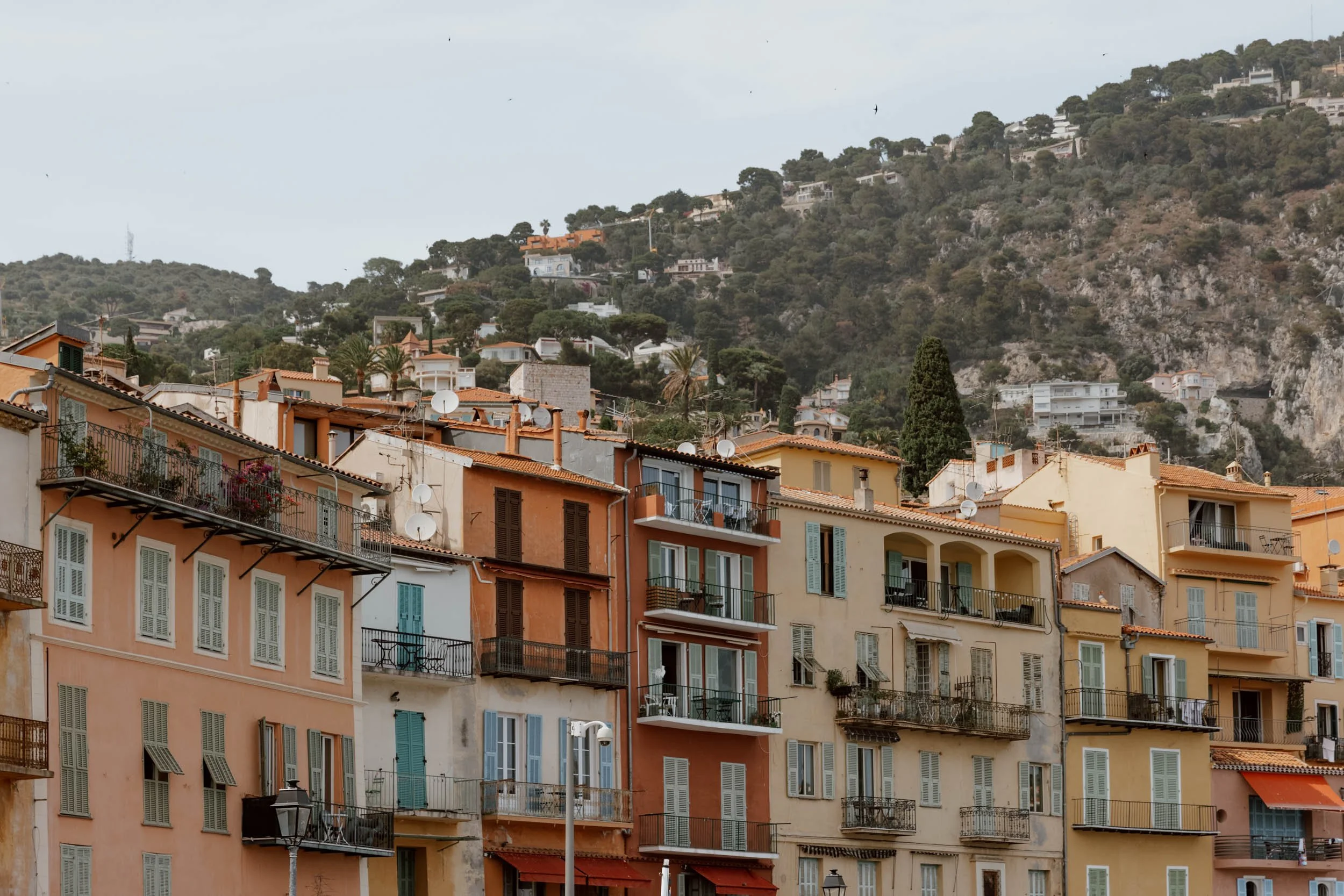Looking for the best things to do in La Rochelle? We’ve got you covered.
Updated April 2024
On a late summer's day, looking out to the ocean from its three towers, it may be difficult to imagine this city of a thousand years under siege.
A popular French holiday destination on the southwest coast and student hub, where island paradise is just a bridge away and yachts dot the horizon, La Rochelle is a home-away-from-home for holidaying Parisians and travellers indulging in the delights of Charentes. Come summertime, its open-air bars and restaurants are packed, lovers stroll the promenade or picnic in its green spaces, photogenic medieval streets come alive with visitors, and life feels like it's there to be lived.
Yet, this small city by the sea played a more pivotal role in several acts of French history than it may seem on a sun-kissed day: a refuge for rebels and religious dissidents blessed with a natural harbour, its fortunes rose with the maritime tides of the Atlantic and New World embarkations, and fell under a year-long blockade by Cardinal and King and the upheaval of the industrial revolution.
The French gateway to the Atlantic Ocean, La Rochelle's past, present, and future is forever tied to the waves and those carried upon them.
Their faint traces may not be immediate on a stroll along its gorgeously French old harbour front, but they are there to be found in the archways of soft, cream limestone, dried into the salted seams of half-timbered houses, and carved into the walls of the towers which imprisoned priests and pirates.
In this post, we've shared all the best things to do in La Rochelle, plus everything else you need to know to make the most of your stay in the beautiful La Ville Blanche, including where to eat, transport, and day trip ideas!
La Rochelle Eseentials
// Population of 80,000
//2.5 hours from Paris + Bordeaux by train
// Start point for the beautiful Atlantic Islands
// Important modern-day maritime hub and port
// Easy to explore on foot or by bicycle.
How Many Days | Two days here is a great amount of time, but you should extend that if you'd like to spend a full day out on one of the three Atlantic islands or use it as a base for day trips in Charentes. With its small airport just outside the city, and good train connections to the rest of France, La Rochelle is ideal for a long weekend break.
Best Time To Visit | The climate on France's west coast is always a pleasant surprise to us, with the warm summer sunshine lingering into late September / mid-October. The winters are also relatively mild. This makes La Rochelle a great option for shoulder season trips in spring and autumn, but just bring layers with you for the early morning & late evening chill. August in France is holiday season, so avoid this if you can. There are several popular annual festivals in La Rochelle, including Les Francofolies in July, so demand may outstrip supply at times.
Connections | We've included more logistics and planning advice for La Rochelle at the end of this post!
Our Favourite Things to Do in La Rochelle
Enjoy ‘Le Vieux Port’
One can't help but smile as you saunter along the iconic Vieux Port (Old Port) of La Rochelle.
Come day and night, this is the heart of the city and the action. It's a smaller, cleaner, less raucous version of Marseille's old harbour and, for lack of a better expression, just very, very French in its aesthetic and ambience.
Enter via the grand entrance at Tour de l'Horloge (maps), and choose to go right along Cours des Dames toward La Tour de la Chaîne via several restaurants, including Le P'tit Bleu (unfussy fresh seafood served quickly out of a boat).
For a drink with a pleasant view, Café Leffe is well situated but does charge accordingly.
Or go left first, along Quai Duperré, the busiest and most picturesque stretch. On one side you'll have busy outdoors tables of bars and restaurants beneath a gorgeous ensemble row of white shutters, balconies and facades. On your right, the basin of the old harbour is filled with boats, birds, couples picnicking on the ledge, and postcard views of La Rochelle’s most famous features.
Stop by for your morning coffee & croissant, a long lunch in the sunshine, picnic and dangle your legs over the side, stroll along at sunset, and come back for drinks and a lively atmosphere once the sun goes down.
There's a diverse enough vibe amongst the bars and restaurants to suit your own preferences, but we liked Les Enfants du Rock for an after-drink tipple.
Continue along Quai Duperré and you'll pass a few more places to eat and drink, and eventually arrive at the tourist office and the big ferris wheel. Round the corner from this is the Gabut district, once the area for fishermen but now better known for its distinctly un-French painted wooden houses (a nod toward historic trading links with Scandiniavia) and the city's street art zone.
Good to know // It's not uncommon for the Vieux Harbour streets to be pedestrianised on and around at weekends, but do be aware that there's a cycle lane along the front (lots of people are oblivious to it).
Climb The Three Towers
La Tour Saint-Nicolas & Tour de la Chaîne, two 14th century towers which look across the Atlantic, form the gateway to the Vieux Port and harbour.
Like much here on the front, their original intent was to repel outsiders from the wealthy trading hub. La Rochelle was heavily fortified in its heyday, and a hulking iron chain was drawn between the two towers to monitor the entry and exit of vessels, protect, and ensure any dues were paid.
Much of the defensive walls and ramparts were however demolished following the year-long Siege of La Rochelle, where a shocking number of citizens starved to death under the religiously-motivated blockade (we’ve written more about this later on).
These two towers are pretty much all that remain, and today provide a welcoming, photogenic backdrop.
Nearby, is the more curious Tour de la Lanterne (Lantern Tower).
Picture a lighthouse in your head just now, and you'll likely have a slim white metal or brick tower with a block or stripes of red, yellow, or green?
We'll wager that none of you are thinking of a candle-lit church spire.
However, this stone monument is like no other lighthouse we've ever seen, and showed our ignorance in thinking that lighthouses were a relatively modern invention. The 15th-century Lantern Tower is the oldest lighthouse on the Atlantic Coast and also one of the earliest examples remaining in the world of the type of buildings which provided a lifeline to those at sea.
Interestingly, all three of La Rochelle’s towers were used as a prison at some point in history and the interior of Lantern Tower is pockmarked with graffiti from various captives.
Our advice is to climb at least one of the medieval trio of towers in order to get a the best views available over La Rochelle, learn more about their past, and appreciate its strategic maritime position.
Where + When | Open every day 15th June to 30th September, 10 am - 1 pm + 2.15 pm - 6 pm. From 1st October to 31st March, opening times are 10 am - 1 pm + 2.15 pm - 5.30 pm. The towers are closed the first Monday of each month.
It's €11 for a single ticket, which includes all entry to all three towers (free entry for under 18s and 18 to 25 EU nationals), or alternatively you can buy a combo tickets that includes the towers plus La Rochelle Natural History Museum or Maritime Museum or New World Museum for €15.
Find out more and buy tickets here.
Good To Know // For an altogether different sort of viewing experience, consider jumping on La Grande Roue de La Rochelle (maps), the big ferris wheel opposite the tourist office. It's only €5 per person, open 10 am to 11 pm.
Visit Marché de la Rochelle
If you want to dive straight into the gastronomic breadth of the Charentes region, then head to the daily Marché de la Rochelle.
In the heart of the historical centre, the market spills out from its iron-wrought 18th century building into the square outside, with striped stalls and piled-up produce competing for space and eyes. Inside, there's an array of fresh seafood available, with lots of locals mussels and oysters, whilst the fruit and veg evolves with the rhythms of the season. Throw in artisanal cheese producers, a baker or two, and you're set.
La Rochelle Market is open daily, but Wednesday and Saturday are the busiest days with the most vendors (although the Sunday morning we visited was also heaving). Take a moment to appreciate that facade of the market entrance as well as the interiors, which haven't been modernised or tampered with too much, meaning they've retained most of their original charms.
Rue Gambetta and Rue Thiers, to the left and right of the market entrance respectively, are also part of the market experience, with several bars, restaurants, and charming cafes housed within the layers of red and white brick: ideal for a coffee, pastry, and people-watching before you move on.
When + Where | La Rochelle Market is open daily through the week from 8 am until around 1 pm - find it here.
Top Tip // If you're a fan of French markets generally (and who isn't?), then also consider heading out to the Sunday market in La Pallice, right by the cruise port. Offering a bit more of a mixed bag including clothes, shoes, antiques and produce, it’s also known for its more international food offerings. You can find it here between 8 am and 1 pm.
Drinking & Shopping on Rue Saint-Nicolas
Our favourite street in La Rochelle, pretty and pedestrianised Rue Saint-Nicolas has quite a bit of life to it, with independent shops and ateliers, as well as a few choice restaurants and bars.
La Cave de la Guignette (maps) is one place you must absolutely stop at for a tipple. A bar in situ since 1933, its warehouse-like interior is a cavernous shabby chic delight of dark corners, whilst outside people crowd around short barrels on even shorter stools. The atmosphere and decor was enough to draw us in (it's like a movie set), but it's actually most famous for its 'Guignette' - a cheap, colourful homemade fizzy fruity alcohol drink created right there.
You can enjoy it by the glass, but if there's a group of you then you're best to plump for one of the bottles - avoid the mint flavour though (we were told this by a regular). They also serve wine and beer if you simply want to enjoy the setting, but note that it gets really busy in the evenings as a pre-drinking spot with students and closes 9pm sharp every night - sans exception!
Located just off of Rue Saint-Nicolas is La Place de la Fourche, a square that seems to have been around for hundreds of years, but was actually only created in the 70s after a number of decrepit houses were torn down. Here you will find a handful of charming cafes/restaurants with great outside seating - a good spot to have a break in the sunshine or head to in the evening. Find it here on maps.
Other foodie recommendations in La Rochelle include:
Rue St-Jean-du-Pérot (maps) | Lined with restaurants, this bustling pedestrianised street is regarded by many locals as an excellent spot to grab a meal, with a variety of different cuisines catered to (and a decent spot to head if you have no reservations).
L'Astrolabe (maps) | A short walk from market, L’Astrolab is raved about as a must-go for foodies, with outstanding reviews. They have a creative, minimalist approach to carefully selected global dishes, with their taster menus a very popular option. However, whilst they do have a vegan and vegetarian offering on the menu, we wouldn’t recommend non-meat eaters heading here as we were somewhat disappointed with our meals.
Prao (maps) | A little bit hipster, Prao focuses on local and sustainable produce with a regularly changing, seasonal menu. Decent vegetarian options as well.
Island Poké Bowl (maps) | Decent veggie food can be pretty tough to come by in France, so if you’re looking for a meat-free or healthy lunch we can 100% recommend this poké place by the market. Also does standard raw fish bowls.
Gurou Street Food (maps) | We ran out of time to make it here, but this strictly vegan restaurant would make an excellent lunch (or informal dinner) spot, with tasting sounding street food offerings and really excellent reviews.
Ernest le Glacier (maps) | Ending on a sweet note, for ice-cream or gauffres, make a beeline for Ernest le Glacier, which is widely recognised for serving up the city’s best !
Top Tip // It’s important to note that whilst there are about 400 restaurants in La Rochelle, if you’re keen to eat out anywhere decent on a Friday or Saturday, it's imperative to reserve - even in the shoulder season.
Get Lost Amongst The Arcades & The Gargoyles
In any old European city, especially one like this with over a thousand years of history, our advice is always the same: simply get lost with open eyes and a curious mind.
However, given that you're reading our guide in the search of some inspiration and firm ideas on the best things to do in La Rochelle, that may not be the most helpful advice.
The old port sees most foot traffic from the late morning to the wee small hours, and you’ll go there again and again, but we recommend casting your net further afield to explore the nooks and crannies, medieval corners and Renaissance rues.
A few places to put in your map are:
The Arcades | Dating from the Medieval period, there are around 2.5 kms of these streetside arches in the historic centre. The original intent was to protect market traders and their goods from the rain and sun, and they continue to provide a photogenic shelter from the elements to shoppers today. Best seen on Rue Des Merciers and Rue du Palais, whilst Rue de l’Escale also has some beautiful examples with less footfall (as well as being a very pretty old street).
Cafe de la Paix perhaps offers one of the most 'French' feeling settings in which to enjoy a drink under the arches and people watch.
The Hôtel de Ville | La Rochelle was the first city in France to have its own mayor so it follows that it lays claim to the oldest town hall in France (you'll see hôtel de ville a lot on your travels in the country, and that's what it means). It feels more suited to fairytales than fiduciary matters, but the building was nearly ruined by a fire in 2013, only opening up in 2019 following extensive restoration work. Find it here.
The Half-Timber Houses | We live in a part of England where the streets are stacked with Tudor houses, so it was perhaps not such a marvel for us to see several similar types in La Rochelle. However, along Rue des Merciers and several other alleys in the historic centre, you'll see this architectural style alongside or sandwiched between more elegant limestone buildings.
The reason the wood is covered in slate? The corrosive effect of salt carried on the Atlantic winds means that wood just wont cut it.
La Maison Nicolas Venette | On Rue de l’Escale, this was this was the grand home to the doctor of the city, a medical author, as well as a revolutionary leader. The reason to linger opposite it, before or after the arcades, is to admire the remarkably preserved and detailed 17th century gargoyles and the sculptures of prominent medical figures. Find it here.
Cloître des Dames Blanches | The 'Cloister Of The White Ladies', pretty convent buildings from the 18th century which are used as a sometime art exhibition space. Find it here.
We were fortunate enough to stay at Residence Des Indes, a beautifully restored 18th century building over several stories which aims to be many things: a public art gallery, a guesthouse, a living museum, an occasional concert venue, a tea room, and a third-generation family home. The Sabatiers, the lovely Franco-Indian couple who own it, have amassed so many curiosities from their travels to Africa, Asia, America and the Pacific - from stunning Kama Sutra art from India to death masks from Papa New Guinea - and aim to showcase these as well as the historic links between La Rochelle and the world.
We absolutely adored our stay here, and it’s a great option for those looking for an extra-special stay in La Rochelle. Find out more and book here.
take A Trip to The Atlantic Islands
It is the triumvirate of islands, rather than La Rochelle specifically, which draw so many Parisians and well-heeled French to the west coast come summer.
Whether it's for weekends stops or longer sojourns in second-homes, Ré, Aix, and Oléron offer up idyllic retreats to wild, sandy beaches and pine forests, nature walks and cycles paths, painted villages, vineyards, photogenic salt marshes, boat trips and dining out on freshly caught seafood, alongside a wonderful climate akin to the country's south.
The UNESCO-protected Ile de Ré is the most exclusive and famous. Once an archipelago of three islands, they became one through human activity, namely the salt marshes and silting.
It's connected to La Rochelle by a beautiful sweeping 2.9 km bridge across the blue, which opened in the late 80s, and contributed heavily to its development as a summer holiday destination (for good and bad - the population swells from 20,000 in winter to over 200,000 come summer). To cross over, non-residents have to pay a toll €16 per person, making it the most expensive road to use per kilometre in France.
Oléron, the largest island on the French Atlantic coast, is less chi-chi and free to access over its older bridge. It has a more wild coastline on the east due to exposure to the winds, but the west is calmer and better for swimming.
The lesser-visited and much smaller Aix makes up the La Rochelle island hat-trick, and offers a distinctly different experience. Only accessible by sea, traffic-free and just 3 km long, exploring its several beaches and circuit trail (“Sentier des douaniers”) by bicycle, would make it an enjoyable, relaxed day trip destination. It was also Napoleon's last stop before exile in St Helena.
Where + When | The three islands can be visited on day trips from La Rochelle to explore in-depth or just go to the beach, or as standalone destinations for longer stays. Various boat tours + trips in the city also include visits or stops.
Before making your decision, a quick note on sizes: Ile d’Oléron is 30 km long and 6 km wide, Ré is 30 kilometres long and 5 kilometres wide, whilst Aix is 3 kilometres long and 700m wide.
For more of an overview and advice on all your transport options to the islands from La Rochelle, visit this post on the tourist board's website.
What Was The Siege of La Rochelle?
An event which every visitor should understand to place the importance of La Rochelle within the context of French history, as well its rise and fall before the colonial resurgence, is the year-long Siege of La Rochelle.
From the 1550s onward, this was a rebel city railing against the religious orthodoxy of the Catholic crown and state. Priests were murdered and icons burned, as the Huguenots (Protestants essentially) declared La Rochelle an independent Republic, sided with the English, and followed a divergent, seditious faith. Many of the Huguenots had found refuge here on the coast after various purges against them in France during the wars of religion.
A wealthy maritime trading hub outside the control of King Louis XIII and the Catholic church, and leaning towards allyship with the English across the channel, could simply not be permitted to continue. Cardinal Richelieu, Chief minister to the King, mounted a campaign in 1627 to force the town into submission via a 15-month siege: supply lines were blocked, a giant sea wall was constructed, a population starved.
By the time surrender was issued on October 28th 1628, three-quarters La Rochelle's citizens had starved to death and the population reduced from 27,000 to 5,000 due to the dead and those who fled.
The slow-burn massacre of a siege was the final nail in the coffin for the Huguenots in France, and the defeat laid the platform for the absolute monarchy of Louis XIV, but several seeds of the French Revolution were planted. With the rise of colonialism, emigration, and trade across the Atlantic into the ‘New World’ (if you’re a French Canadian, chances are an ancestor set sail from here), La Rochelle recovered richly over the coming years, which underpins the 17th & 18th century grandeur one can enjoy on a visit today.
From the Saint-Nicolas Tower though, if you look out across the water, a buoy marks the place where Richelieu built the wall and a city was starved into submission.
Travel Tip // If you’d like to learn more about the daily life and splendour La Rochelle 18th century merchant elite, consider joining this entertaining, immersive tour alongside Suzanne Van Hoogwerff, daughter of a merchant.
Set Sail for a Day at Sea
Think you've seen a lot of boats in one place before?
Think again mon ami.
La Rochelle's Port de Les Minimes is the largest pleasure boat marina in all of Europe, storing thousands of French and European boats outside of the summer season; it follows that a sizeable chunk amount of the city economy is centred around the nautical pursuits of the well-heeled.
If your own yacht isn't in the forecast for the next few years, then you can still head out on the waves with one of the many popular boats tours in La Rochelle.
The best options are:
A Coastline Sailing Cruise | Departing from the old harbour, the crew and their maxi-catamaran bring you to some of the popular sights nearby before heading out to the open seas on this highly-rated 2.5 hour tour.
Sunset Sail | Alternatively, you can head out with them at sunset on this super popular 2-hour sailing trip.
Fort Boyard + Island Hopping | This massive stone garrison in the ocean was originally built to house 260 men and 74 cannons, as well ward off the British Royal Navy; it became obsolete before it really proved useful. As with most other old military constructions in La Rochelle, it spent some time as a prison but is now more famous as the location for the eponymous 90s game show.
It's not actually possible for the public to go on and into Fort Boyard, which is a shame, but several boat & catamaran trips do specifically pass by it on their island hopping tours. This four-hour tour is highly rated.
On the old port, you can also find various kiosks selling boat tour excursions for that day.
A word of advice: Don't confuse Minimes Marina with La Pallice port, which is west of La Rochelle. This large deep water industrial-commerical port, a hugely important economic engine of the region, is also the place where cruise ships dock. It was built in the latter part of the 19th century to reverse the decline La Rochelle faced in the industrial age, where the shallow, muddy waters of the old commercial port couldn't cater to big ships and the transportation networks to new industrials hubs in France were insufficient.
Submarine enthusiasts (if such a person exists?) and factoid-fans should also get very excited:
1. The first dives of the first mechanically-powered submarine were done in La Rochelle harbour.
2. Das Boot was filmed here, as were the U-boat scenes for Indiana Jones.
3.The 3rd German U-boat flotilla had its headquarters in La Pallice during WWII, with the Germans biulding massive concrete U-boat pens; they are still standing!
Relax at the City Beaches
La Rochelle itself is certainly not a beach holiday destination in France, but come summertime those who aren't heading from the city to the islands can get sand between their toes at three small urban beaches. As far as we're aware, they're all man-made with shipped-in soft sand.
Plages des Minimes
On a day trip or stay of a couple of nights for non-nautical types, we think there's no real reason to go to the Minimes area. A new development centred on the large marina, it's got modern accommodation and eating options, but it's not where we'd stay or eat out in La Rochelle. However, its beach - the largest of the three and designed to make it fully accessible for people with reduced mobility - would be a nice spot to relax on a hot day. From there, you can also see the 'Lighthouse at the End of the World' (Phare du Bout du Monde), a replica of the one found in Cape Horn.
The beach can be found here.
Fun fact // It’s possible to become a temporary guardian of the lighthouse and spend up to 24 hours here, secluded at sea! Find out more here.
La Plage De Concurrence
A walk or cycle to this beach from the old town, through the 'La Porte des Deux Moulins' or along the promenade du mail, should form part of your wanderings around the centre of La Rochelle. There's also quite a bit of green space nearby to pass through, including Parc Franck Delmas and Park Charruyer, as well as some beautifully grand homes to gawk at.
By the beach, you'll also find Christopher Coutanceau, a three Michelin-star seafood restaurant, and its more modest little sister in the same site.
Plage Chef de Baie
Too far to walk to and quite small, but a nice option if the sun is out and you've got a bicycle. It's a 6 km ride along the coast from the centre of La Rochelle, with the beach next door to the port.
Find it here on maps.
Rent A Bicycle
We had an urge to explore La Rochelle on two wheels before we visited, and were therefore delighted to discover just how cyclist-friendly the whole city is.
Flat with lots of dedicated streets and lanes for bicycles, 230 kms of cycle paths, and a city-wide bicycle scheme offering up flexibility if you want to simply head along the cobbles for a couple of hours, to the countryside, or follow the coast for a half-day.
Sign up for the Yélo scheme which is just 50 cents for the 30 minutes, then €1 for each subsequent 30, or rent from Cyclo Parc, Cycling Tour or Greenbike.
A Day Trip to Marais Poitevin
Prized for its diverse flora and fauna as well as thousands of migratory birds, the vast, flat Marais Poitevin was at one point entirely covered by water. Man intervened though to drain and dredge with a system of canals passed from monks to Dutch engineers; today much of the criss-crossed wetlands are protected or farmland.
It’s a popular area for French visitors from spring to late summer, looking to reconnect with nature on many biking and walking trails, or head out on traditional flat-bottomed boats under a canopy of trees on the criss-crossing canals.
It’s also home to one of the best sunsets we’ve witnessed in all our years of travel.
From La Rochelle, you can explore Marais Poitevin by car, but the most enjoyable way would be to head out on bicycle. For the flat-bottomed boat rides (guided or self-propelled) make your way to the Bazoin locks (maps) - whilst there, grab lunch at the surprisingly fantastic ‘Les Etangs de Julie’ restaurant. For gorgeous reflections and that sunset, head to the Pavé de Charron (maps)
Find more Inspo + info to help you plan here.
Cognac Drinking
We promise that you don't just come to La Rochelle in order to leave it straight away! It's just that with the new-ish small airport on the outskirts, the city really is the main jumping off point to several other highlights of Charentes in close proximity.
Foremost amongst them is Cognac, the beautiful region which gives name to the specific brandy drink, grown and produced here. Visitors to the area are able to join lots of guided tours and tastings, as well as spend time in the vineyards, either independently or part of a tour. A few to consider can be found here.
There is a direct train between La Rochelle and Cognac (1 hour 20 minutes), but do note that the departures are somewhat infrequent and often require a change of trains and a longer travel time. Therefore, if you’re keen to visit independently on a day trip we’d recommend hiring a car*.
Alternatively - and perhaps more practically convenient if in La Rochelle for a short break - we'd recommend joining a dedicated tour from the city.
If you’re more interested in the tasting side of things, just find a good bar in the city and order a local tipple or three. ‘Cognac Only’ on Rue de l Archimede (maps), as the name suggests, is the place to go in La Rochelle to buy a few bottles but do also consider stopping by Pineau Cognac Bousset to sample their oak-aged grape liqueur from the region.
*We rarely go direct when hiring our road trip vehicles, instead preferring to use two popular rental aggregators to compare costs and find the best deal. The two companies we use are AutoEurope and RentalCars - both of which we have had only excellent experiences with.
Where to Stay in La Rochelle
La Rochelle Hotels & Guesthouses
La Belle Amarre | The antithesis to big chains and large hotels, this super cute guesthouse has a comfortable, artistic and sightly quirky aesthetic, as well as an excellent location. Has really superb reviews. Find out more here.
La Résidence des Indes | Within the walls of a grand Palais, this is the hotel we were fortunate to stay in and it is really quite remarkable! Run by a Franco-Indian couple it is part hotel, part art gallery, part museum and filled with antiques and curios picked up on their travels. Rooms are very comfortable and the service excellent.
Maisons du Monde Hôtel & Suites | Exquisite hotel overlooking the Vieux Port. Set within a historic building, it has undergone an excellent modern conversion with wonderful communal areas and a variety of different room designs. Guests speak very highly of it. All amenities one would expect for a 4* hotel.
Whilst the 4*Hôtel La Monnaie Art & Spa likely wouldn’t be everyone’s cup of tea, if you love the idea of sleeping in a modern art gallery, be sure to take a look!
Citotel Hôtel le Bord'O | An excellent budget options right in the centre of the old town, this hotel is full of large scale pieces of wall art and would particularly suit a younger couple or friends.
Un Hôtel En Ville | A boutique hotel located in the heart of the Vieux Port historic quarter. It offers contemporary accommodation - with generous splashes of colour - as well as a pleasant guest terrace overlooking the Tour de la Lanterne.
La Rochelle Airbnbs & Apartments
La Rochelle has a huge number of apartments to rent within the historic centre which means two things: one, there is usually good availability, and two, choosing one can be quite picky! Below are a selection of options with excellent reviews.
Please note that a number of apartments have a minimum of a week’s stay; these have been excluded given that we imagine most people will visit La Rochelle for a shorter period of time.
15th century listed home | This is an Airbnb Plus property - and you can tell! Based within the walls of a traditional 15th-century half-timbered house, the two-bedroom property has been wonderfully restored with vintage wooden décor, an excellent kitchen and homely touches.
La Blanche | With modern, clean lines, and a minimalistic aesthetic, this one-bedroom is a pleasant option for a couple - but the real benefit of this property is the incredible view directly over the Vieux Port.
Charming Apartment | his gorgeous two-bedroom apartment in the heart of the historic centre has been renovated and decorated to a high standard with neutral tones and contemporary furnishings, whilst maintaining period features like original beams.
ǐ Le Majorelle | Located near the port, this modern one-bed apartment has been decorated to a high standard, with modern amenities and soothing tones with the occasional pop of Yves Klein blue. It’s ideal for a couple.
The same host also offers ǐ Mezzanine, a gorgeous two-bedroom apartment with just the most beautiful interiors.
If you prefer your Airbnbs to be more about stylish comfort with natural materials than minimalism or design led wonders, one-bed Magnifique T2 and two-bed Cosy Hypercentre may be ideal. Such cosy places to stay, especially in the cooler months.
Airbnbs With Wonderful Outdoor Space and Views | Arty's House and Le Carré du Nord
L'Echappée Verte, La Kasasurf (whihc has a fantastic outdoor area), this historic one-bed, and Cosy One Bed With Terrace are good budget-friendly options in the historic centre.
A selection of other Airbnbs that you should absolutely check out include: Le Toit des Merciers, Two Bed Near Market, Le Valin, Apartment Vue Port, Vue exceptionnelle sur le Port (the last three of which have the most incredible views of the Old Port).
At the time of update, the following properties are currently not available. However, they’re really great options so we’ve left the details in case it comes back online.
Charming 3 Star | One of the prettiest Airbnbs we spotted in our searches, this one-bedroom apartment has been beautifully designed and furnished, is full of light, has an excellent location and great reviews.
How To Get To La Rochelle
// La Rochelle By Plane
Arrivals from the UK and Europe can fly direct to the tiny Aereoport La Rochelle-Ile de Ré (maps), which is a 15-minute / 8 km drive from the town centre and a 20-minute / 13 km drive from the train station. It really is very very small, resulting in perhaps the least stressful airport experience you’ll ever have.
To reach the centre from the airport, jump on the Illico 1b bus, which runs 6 am to 9.19 pm every 20 minutes Monday to Saturday (€1.30 per person, buy on board). On Sundays and public holidays, you have to take the hourly line D5, running from 9 am to 7 pm.
Find more information and bus timetables here.
With a taxi it’ll cost about €20 - €25, but give yourself at least half an hour to cater for traffic.
// La Rochelle by Train
If travelling to La Rochelle from within France, we’d recommend making the journey by train as it’s much more sustainable and enjoyable. La Rochelle train station (Gare de La Rochelle - maps) is about a 2.5 hour hour direct train ride from both Paris and Bordeaux, with more routes possible if you’re happy to transfer.
From the train station, it’s about 15-minutes / 1 km to the Vieux Port and historical centre - perfectly feasible if you’re light on luggage; otherwise, hop in a taxi.
This guide was written in partnership with Atout France and Destination Nouvelle-Aquitaine





